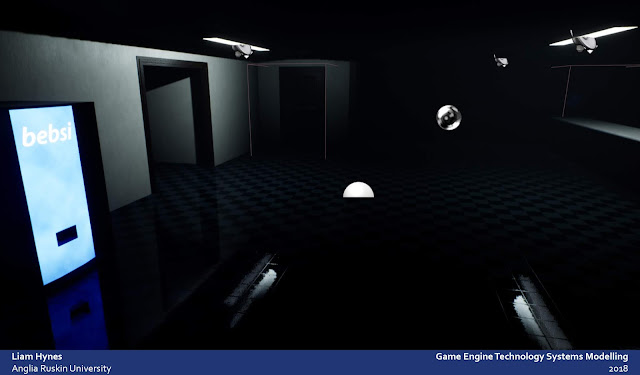Phantom Culprit: Lighting and Materials
The Lighting
Lighting and materials play a massive part in the immersion of a player into the game world. I read articles published by Epic themselves on how the lighting system works in the Unreal Engine and the best techniques to light each part of the level.
- Static, Stationary and Movable lighting - (detailed in Phantom Culprit: Level Creation)
- Materials and their properties - PBR materials (detailed at the bottom of this post)
- Reflection spheres - capture and reflect light in a lighting build
- Post processing - edit lighting, bloom, colour grading, camera effects
- Exponential height fog - dense fog with light scattering
The Materials
The second part of a great lighting setup is PBR (Physcially Based Rendering) materials. Each of these materials are made up of 4 textures, A diffuse, roughness. normal and ambient occlusion texture. This gives a material accurate, lifelike shading properties, making light bounce off and reflect in a realistic way.
All materials I used, apart from the ones I created in Substance Painter, are made by CC0 Textures, a license free PBR material site. It's a great resource for students or indie developers without an artist.


Comments
Post a Comment